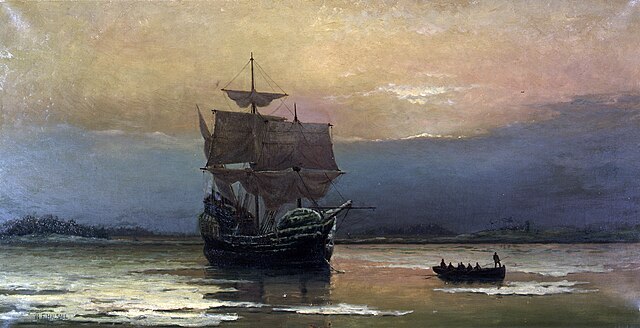New Amsterdam was a 17th-century Dutch settlement established at the southern tip of Manhattan Island that served as the seat of the colonial government in New Netherland. The initial trading factory gave rise to the settlement around Fort Amsterdam. The fort was situated on the strategic southern tip of the island of Manhattan and was meant to defend the fur trade operations of the Dutch West India Company in the North River. In 1624, it became a provincial extension of the Dutch Republic and was designated as the capital of the province in 1625. New Amsterdam became a city when it received municipal rights on February 2, 1653.
View of New Amsterdam
The Rigging House, 120 William Street, in 1846. It was a Methodist church in the 1760s, then a secular building again before its demolition in the mid-19th century.
1882 depiction of the ship Mayflower sailing from England to America in 1620, in Plymouth Harbor
1626 letter in Dutch by Pieter Schaghen stating the purchase of Manhattan for 60 gulden.
The Dutch colonial empire comprised the overseas territories and trading posts controlled and administered by Dutch chartered companies—mainly the Dutch East India Company and the Dutch West India Company—and subsequently by the Dutch Republic (1581–1795), and by the modern Kingdom of the Netherlands after 1815.
It was initially a trade-based system which derived most of its influence from merchant enterprise and from Dutch control of international maritime shipping routes through strategically placed outposts, rather than from expansive territorial ventures. The Dutch were among the earliest empire-builders of Europe, following Spain and Portugal and one of the wealthiest nations of that time.
São Luís, Maranhão, Dutch Brazil
Olinda, Pernambuco, Dutch Brazil
The Portuguese victory at the Battle of Guararapes ended Dutch presence in Brazil.
Overview of Fort Zeelandia on the island of Formosa, 17th century








